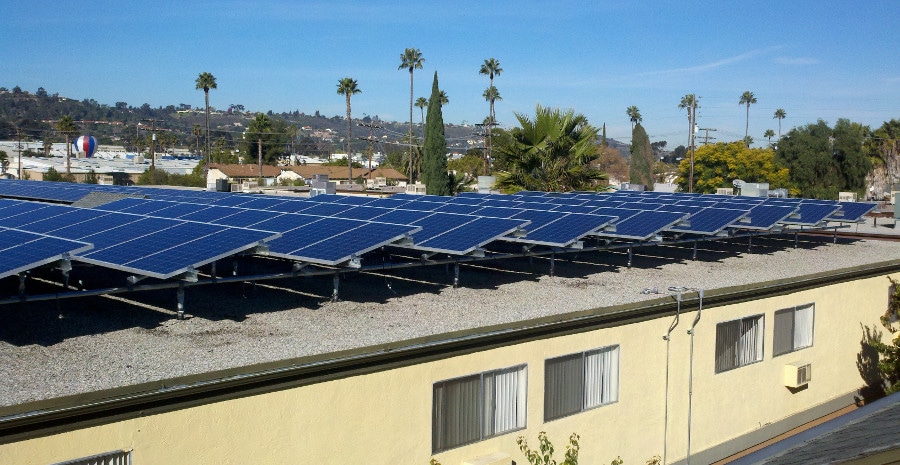California is the undisputed solar leader in the United States. With policies and mechanisms like its ambitious renewable portfolio standard, the California Solar Initiative (CSI) and community choice aggregation, the Golden State has provided lessons for other states in novel and practical policies to advance solar deployment.
But there are a few areas where even California has struggled. One of these is providing access to the benefits of solar to renters, especially low-income renters. Following on the deployment of 29 MW of rooftop PV systems through the CSI’s Multifamily Affordable Solar Housing (MASH) program, in 2015 California passed a bill to create new incentives to deploy 300 MW of solar to serve low-income residents of apartment buildings and other multifamily housing.
However Assembly Bill (AB) 693 did not set the form of the program, and for two years implementation dragged through the California Public Utilities Commission (CPUC), which likely had its hands full designing Net Metering 2.0 and multiple other programs around distributed energy.
Finally, at the end of October, CPUC put forth a proposed decision which set the form of the Solar on Multifamily Affordable Housing (SOMAH) program as the vehicle for the implementation of AB 693, and earlier this week California Solar Energy Industries Association (CALSEIA) and other parties issued comments on the proposed design.
SOMAH has different funding rules and eligibility requirements than MASH and will obtain its funding from the share of greenhouse gas allowance auction proceeds from the state’s three large investor-owned utilities. The program will not only provide $100 million annually in incentives for the deployment of solar on low-income apartment buildings, but will also ensure that renters in those buildings are the primary recipients of net metering credits for such generation.
CALSEIA, which backed the passage of AB 693, describes this as an important aspect of the program. “It is meant to provide direct economic benefit to the tenants of the building,” said CALSEIA Senior Policy Advisor Kelly Knutsen.
However, CALSEIA also notes that the program is behind schedule. CPUC missed a statutory deadline in June of this year for starting the program and still must choose a program administrator to run it. CALSEIA is asking for CPUC to wrap things up and roll the program out in June 2018.
The next step will be reply comments, which are due by November 30. CPUC will be deciding on the program design under the proposed decision on December 14.
This content is protected by copyright and may not be reused. If you want to cooperate with us and would like to reuse some of our content, please contact: editors@pv-magazine.com.









By submitting this form you agree to pv magazine using your data for the purposes of publishing your comment.
Your personal data will only be disclosed or otherwise transmitted to third parties for the purposes of spam filtering or if this is necessary for technical maintenance of the website. Any other transfer to third parties will not take place unless this is justified on the basis of applicable data protection regulations or if pv magazine is legally obliged to do so.
You may revoke this consent at any time with effect for the future, in which case your personal data will be deleted immediately. Otherwise, your data will be deleted if pv magazine has processed your request or the purpose of data storage is fulfilled.
Further information on data privacy can be found in our Data Protection Policy.